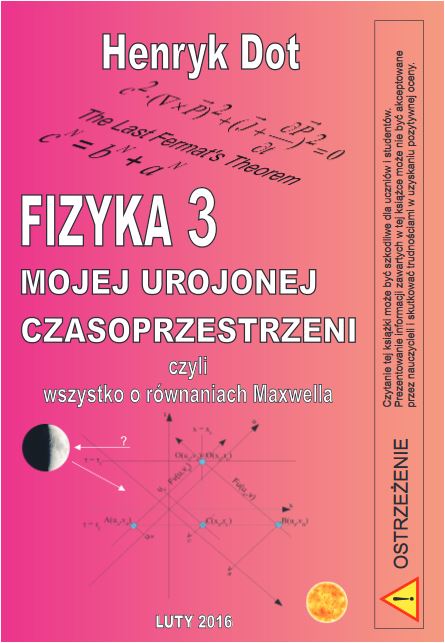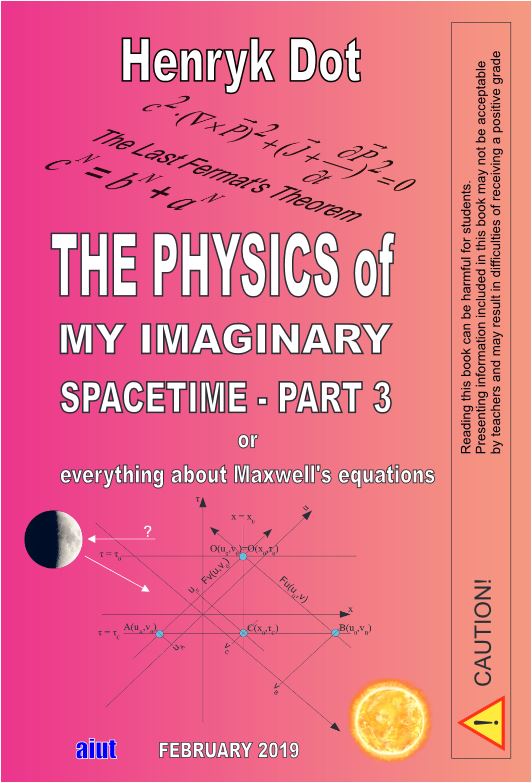is the online companion to a series of books published by AIUT under the common main title
"Physics of My Imaginary Space-Time" by Henryk Dot.
Physics 3 - Maxwell
Note from the Author
Table of Contents
What is this book
Historical facts
New aspects
Fully erroneous
Incorrectly interpreted
Physics 3 - Chapter 1
Equations
Complex vectors form
The Most General form
The General Solution
Physics 3 - Chapter 2
Solutions
Initial conditions
Non-homogeneous equation
Solution for three-directions
The four laws
Physics 3 - Supplement
Fermat's proof
Beal's conjecture
Pythagorean triples
Inertial mass
Gravity constans big G
What does the Moon look at?
Physics 3 - Final notes
Final notes
Physics 4 - New book
Entry
"Subject" should begin with
a digit corresponding to the day
of the week., e.g. Sunday=7
Books published by AIUT
are found in libraries according to the list of compulsory copies.
Second Edition of "Fizyka 3"
ISBN 978-83-926856-1-6

can be bought in Warsaw
in the Academic Bookstore
PW Publishing House
Noakowskiego street 18/20
and in Katowice
in the bookstore "Liber"
Bankowa street 11.
(area of Silesian University)
English edition of "Physics"
ISBN 978-83-926856-2-3

is also in libraries
and the distribution method should be asked wydawca@aiut.com.
|
3.1. Short and simple proof of Fermat's theorem Theorem Proof |
|
| cN = bN + aN, | (3.1) |
|
in order to eliminate secondary solutions, we additionally assume that
N The following relation applies for odd numbers N: |
|
| (3.2) | |
|
which means that cN must be divisible by a+b. By introducing two integer variables: s=a+b and x=s−c we obtain: |
|
| (3.3) | |
|
which applies for each natural N > 0 and maintains the required
(per 3.2) The expression in square brackets in (3.3) could represent an integer number, This can be written as s=w‧ v and x=w‧ u, where v, u are natural numbers. By inserting these relations to (3.3) we can notice that left side of the equation (3.3) contains a multiplier wN, which should be also presented on the right side of the equation. |
|
| (3.4) | |
|
We can see that an existence of required common divisor of
s and x
does not cause that expression in sqaure brackets in (3.3) is an integer number; if w
would be the greatest common divisor then
v and u
would be relatively prime, then (after taking wN-1 outside the brackets)
the expression in square brackets cannot be an integer number. |
|
| |
(3.5) |
|
where it is clearly visible that expression in square brackets cannot be an integer number. Thus, the natural, non-zero numbers s and x satisfying (3.3) do not exist. We have shown above that the theorem is true for N > 2, being a prime number and for all compound exponents N > 2 containing divisors which are prime numbers different than 2. In conjunction with the fact, that the theorem is true for N= 4
(End of proof) |
|
© 2020 Henryk Dot -
